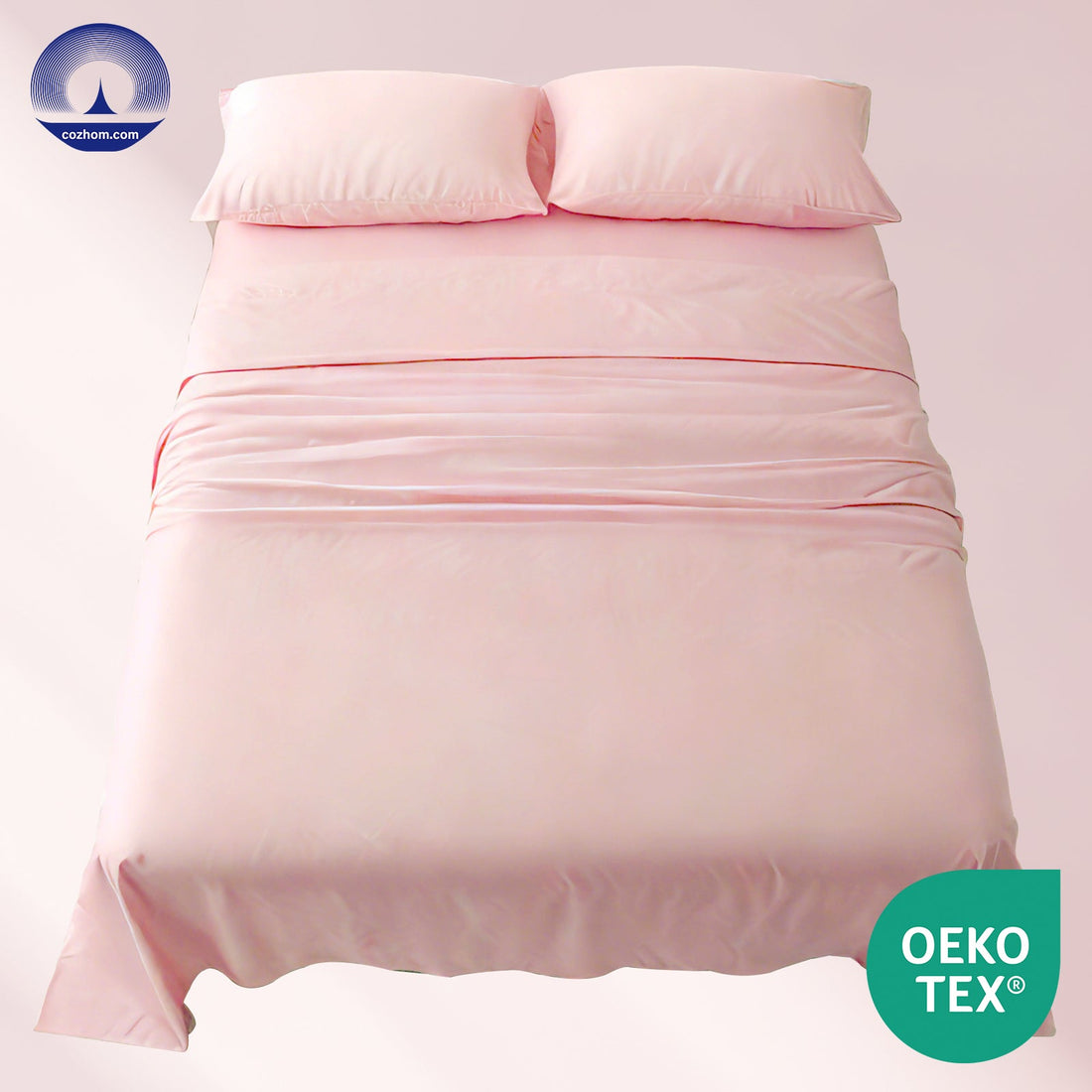
Insomnia During Pregnancy: Why COZHOM Works Best
Compartir
Overview. Insomnia during pregnancy is a deeply felt problem for many expecting mothers. Estimates vary by trimester, but studies commonly report that between 50% and 78% of pregnant women experience significant sleep problems at some point, including difficulty falling asleep, frequent awakenings, and non-restorative sleep. Concerns about fetal safety limit pharmacologic options, leaving pregnant women and their clinicians with an urgent need for safe, effective, non-drug solutions. COZHOM X Series bedding offers a physiologically targeted approach—reducing peripheral triggers to improve nightly sleep continuity.
Why sleep is different during pregnancy
Pregnancy introduces a range of physiological changes that influence sleep:
- Hormonal changes: variations in progesterone, estrogen and cortisol affect circadian rhythms and REM sleep.
- Thermoregulation shifts: metabolic rate increases, making many women more heat-sensitive at night.
- Mechanical discomfort: abdominal size, pelvic pressure and back pain challenge comfortable sleep positions.
- Frequent urination: bladder pressure leads to multiple nocturnal awakenings.
Risks associated with untreated pregnancy insomnia
While insomnia itself is not necessarily pathological, chronic poor sleep during pregnancy is associated with higher risks of gestational diabetes, hypertensive disorders, and mood disturbances. It can also increase maternal stress, which has downstream effects on fetal development. Thus, safe interventions that improve sleep quality are a clinical priority.
Why many sleep aids are unsuitable in pregnancy
Prescription hypnotics and many OTC sedatives have limited safety data for pregnancy, and obstetric guidelines typically prioritize non-pharmacologic measures. Even popular supplements like melatonin have limited robust pregnancy-specific safety trials, prompting clinicians and patients to prefer environmental and behavioral strategies when possible.
COZHOM’s non-drug solution tailored for pregnancy
COZHOM X Series bedding is developed with pregnancy-specific needs in mind. Core features beneficial for expecting mothers include:
Thermal balance
COZHOM fabrics balance warmth and breathability—reducing night sweats that often fragment sleep during pregnancy.
Pressure relief
As abdominal size increases, side-sleeping becomes preferred. COZHOM’s conforming textiles and mattress layer options reduce focal pressure on hips and shoulders, making side-sleeping more sustainable and comfortable.
Microcirculatory support
Enhanced capillary perfusion at the skin interface reduces numbness and restless sensations that prompt repositioning, supporting deeper, less interrupted sleep.
Evidence and pilots in pregnant users
Pilot product studies involving pregnant participants have shown:
- Improvements in sleep efficiency by roughly 20–30% after 4–8 weeks of nightly use.
- Reduction in awakenings by about 15–25%, with many users reporting fewer position changes and less thermal discomfort.
- High satisfaction and intent-to-reuse in more than two-thirds of the trial cohort.
Again, while larger randomized trials would strengthen generalizability, these practical findings are promising and align with the known physiology of sleep.
How COZHOM complements obstetric care
COZHOM is not a substitute for obstetric oversight. Instead it complements standard care by reducing nightly physical stressors so other behavioral interventions (CBT-I, relaxation training) can be more effective. A recommended workflow:
- Discuss sleep concerns with your OB/GYN or midwife.
- Adopt basic sleep hygiene and relaxation practices.
- Introduce COZHOM bedding as a nightly, non-drug adjunct and monitor changes over 4–8 weeks.
Practical advice for pregnant users
- Use side-sleeping pillows in combination with COZHOM for spinal support.
- Keep bedroom temperature in the recommended range (about 16–19°C / 60–67°F).
- Consider trialing COZHOM sheets first before upgrading other mattress components to assess individual benefit.
- Track changes using a sleep diary to provide objective information during prenatal visits.
FAQ for expecting mothers
Is COZHOM safe for nightly use during pregnancy?
Yes. COZHOM products are non-invasive and made from skin-friendly materials designed for nightly use. If you have specific dermatologic or high-risk pregnancy concerns, consult your provider first.
How quickly will I notice improvements?
Many users report subjective improvements in 1–2 weeks, with more robust objective changes by 4–8 weeks.
Can COZHOM replace medical treatment for serious sleep disorders?
No. COZHOM is a supportive, non-pharmacologic tool. If you suspect sleep apnea, severe restless legs, or other primary sleep disorders, seek specialist evaluation.
Conclusion
Insomnia during pregnancy is common and multifactorial. Given limits on pharmacologic options, safe, physiologically targeted interventions like COZHOM X Series bedding offer an important pathway to better prenatal sleep. By reducing peripheral triggers—thermal discomfort, pressure points and microcirculatory disruption—COZHOM helps expecting mothers achieve more continuous and restorative sleep. To learn more and consider a trial, visit COZHOM X Series or explore additional resources at www.cozhom.com.